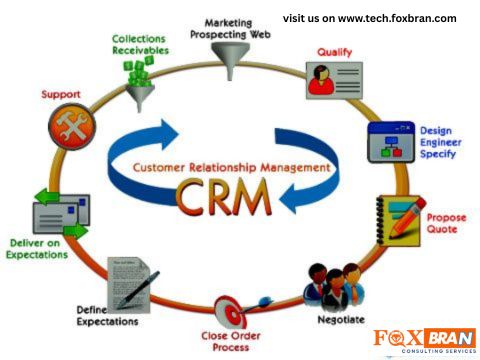In today’s digital-first business environment, success is no longer about sales or marketing working in silos. Instead, it’s about alignment—creating a seamless flow of information, strategy, and customer experience between both teams. At the heart of this transformation is the Customer Relationship Management (CRM) system.
Once seen as a simple database for storing customer contacts, CRMs have evolved into powerful engines that connect marketing and sales, enabling businesses to nurture prospects, personalize campaigns, and close deals faster.
So, how exactly are CRM systems reshaping sales and marketing alignment in 2025? Let’s break it down.

Table of Contents
🔑 1. A Single Source of Truth
One of the biggest challenges businesses face is data silos. Marketing runs campaigns and gathers leads, but sales often has limited visibility into that data—or vice versa.
A modern CRM solves this problem by acting as a central hub. Both teams can access the same customer journey—from the first website click to the final purchase. This shared visibility reduces confusion and creates a unified strategy.
📊 2. Smarter Lead Management
In traditional setups, sales often complains about “poor-quality leads,” while marketing argues that sales isn’t following up effectively.
CRMs now come with lead scoring and nurturing features. Marketing can qualify leads based on engagement (emails opened, forms filled, demos requested), while sales gets notified when a lead is truly ready for outreach.
This not only improves conversion rates but also builds trust between teams.
🎯 3. Personalized Customer Journeys
Customers today expect more than generic emails or sales pitches. With CRM-driven insights, businesses can create personalized touchpoints at every stage of the funnel.
For example:
- Marketing can segment audiences and send relevant campaigns.
- Sales can use customer behavior data to tailor conversations.
The result? Customers feel understood, not sold to.
⚡ 4. Real-Time Collaboration
Gone are the days of waiting for weekly meetings to sync updates. With cloud-based software, both teams can collaborate in real time.
- Marketing can see which leads are progressing in the pipeline.
- Sales can provide feedback on campaign effectiveness.
This continuous feedback loop keeps both teams agile and aligned.
🤖 5. AI-Powered Insights
AI is transforming how CRMs function. Predictive analytics can now forecast which leads are most likely to convert, which campaigns deliver the best ROI, and even recommend next steps for sales reps.
This ensures both sales and marketing are not working on guesswork but on data-driven strategies.
💡 6. Closing the Loop Between Efforts and Results
CRMs make it easy to track the entire customer lifecycle. Marketing can see which campaigns generated revenue, while sales can identify which touchpoints influenced deals.
This alignment helps businesses shift from “vanity metrics” (likes, impressions) to true revenue impact.
📌 7. Building Long-Term Relationships
Sales doesn’t end at closing a deal, and marketing isn’t just about generating leads. this software empower both teams to focus on customer retention and loyalty.
By sharing insights, both teams can work together on upselling, cross-selling, and re-engagement campaigns—creating long-term value for the business.
🚀 The Business Impact of CRM Alignment
When sales and marketing work hand-in-hand through a CRM system, businesses see:
- Higher lead-to-customer conversion rates
- Improved ROI on marketing spend
- Stronger customer relationships
- Shorter sales cycles
- More predictable revenue growth
❓ FAQ: CRM and Sales-Marketing Alignment
Q1. Why is CRM important for sales and marketing alignment?
👉 CRM creates a shared platform where both teams can access, track, and manage customer interactions, reducing silos.
Q2. How does CRM improve lead quality?
👉 With features like lead scoring and segmentation, this software ensure only high-quality leads are passed to sales.
Q3. Can small businesses benefit from CRM systems?
👉 Absolutely! Modern CRMs are scalable and affordable, making them valuable for businesses of any size.
Q4. What role does AI play in CRM?
👉 AI provides predictive analytics, automates repetitive tasks, and helps identify the best actions to move leads down the funnel.
Q5. How does CRM impact customer retention?
👉 By tracking customer history, CRMs help teams personalize follow-ups, ensuring long-term satisfaction and loyalty.
In 2025, CRM systems are no longer optional—they’re essential. They bridge the gap between sales and marketing, ensuring both teams are working toward the same goal: delivering value to the customer.
When businesses adopt CRM-driven alignment, they don’t just close more deals—they build stronger, lasting relationships.
👉 The future of business growth lies in collaboration. And the tool making that collaboration possible is your CRM.
📢 Your Turn:
How is your organization using CRM to align sales and marketing? Drop your thoughts in the comments—I’d love to hear your perspective.
